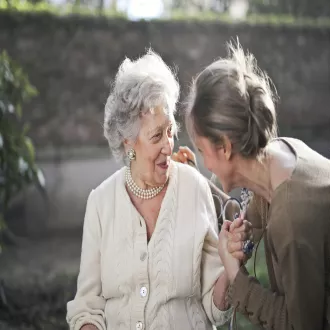Transcription Codependency and the Role of the Giver and Taker
Codependency is a dysfunctional relationship pattern where one person's needs are unhealthily intertwined with those of another.
In these relationships, the dynamic is divided between the "giver" and the "taker."
The rescuer fits the role of the giver, who feels unworthy and constantly sacrifices to meet the needs of the taker.
The persecutor and the victim, on the other hand, fit the role of the taker, as they depend on the sacrifices of the giver to satisfy their emotional needs.
The dynamics of the giver and the taker
The giver, or rescuer, invests all his energy in making the taker happy, often at the expense of his own health and well-being.
He convinces himself that his happiness is tied to that of the taker, creating a need to be needed.
This dynamic becomes addictive for both parties, as the giver gains a sense of purpose and worth, while the taker receives constant attention without having to take responsibility for his or her own emotions.
However, this relationship is fundamentally one-sided and is based on emotional abuse and power imbalances.
Recognizing Codependency
To recognize whether one is in a codependent relationship, it is vital to ask oneself thoughtful questions.
Questions such as, "Do I spend all my energy on meeting my partner's needs, even if it makes me uncomfortable?", "Am I afraid that my words or actions will create conflict?", or "Do I feel like I am trapped in the relationship?".
It is also crucial to ask whether we are always the ones making the sacrifices, whether we are constantly apologizing for things we have not done wrong, and whether we feel we have lost our sense of self in the relationship.
Identifying if the other person treats us badly (yelling, blaming, belittling) but we still idealize them is a clear sign of codependency.
Towards healthy relationships
The only way to break the cycle of codependency is to adopt an "I'm okay, you're okay" position.
This perspective implies that each person is responsible for their own happiness and well-being, and that they come together to create something of mutual value.
Rather than coming together out of need or sacrifice, they come together out of a desire to cooperate and grow together.
In this type of relationship, people can communicate honestly, express their needs, and set boundaries without fear, as they do not expect the other person to be responsible for their emotions.
Summary
Codependency is a dysfunctional relationship pattern where the needs of one person are intertwined with those of another. The dynamic is divided between the "giver" (rescuer) and the "taker" (victim or persecutor).
The giver invests all his or her energy in making the taker happy, sacrificing his or her well-being. This dynamic becomes addictive for both parties: the giver gets a purpose, while the taker receives attention. The relationship is based on emotional abuse.
To break the cycle of codependency, the "I'm okay, you're okay" position must be adopted. This perspective implies that each person is responsible for his or her own happiness, joining with others to create something of mutual value.
codependency and the role of the giver and taker







